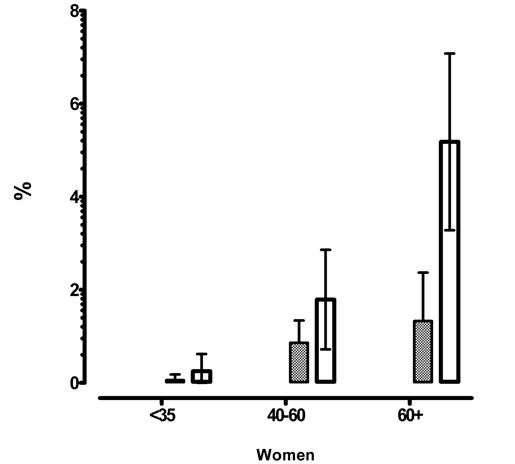Session Information
Session Type: Abstract Submissions (ACR)
Background/Purpose: Despite the widely shared impression that the prevalence of gouty arthritis (gout) has increased over time in the US few population data are available.
Methods: We compared the age-gender specific prevalence proportions of self-reported gout from the 1959-1962 and 2009-2010 cycles of National Health and Nutrition Examination Surveys (NHANES). Using mid-period Census data we estimated and compared population-prevalence rates. Age, sex and risk factor adjusted changes were assessed using Poisson regressions.
Results: The estimated number of cases of gout in the US increased from about 1.1 million in 1960 to 8.1 million in 2010. The proportion of respondents with gout in NHANES increased from 1.1% to 3.7% whereas the unadjusted population-based prevalence of gout increased from 6 per 1000 to 26 per 1000. The increased prevalence was evident among all adults, men and women but was statistically significant and of larger magnitude among those 65 years and older (Figure 1, 2). The proportion of women in the population with gout remained unchanged at 31%. The mean age of the prevalent gout among adults (age>=18) increased from 54 years to 61 years among men and 57 years to 65 years among women. The age-sex adjusted prevalence rate ratio was 2.9 (2.1, 4.1). In Poisson regressions adjusted for age and waist circumference, the prevalence rate ratio decreased to 1.57 (1.18, 2.11). When men and women were studied separately in these regressions, the increase in prevalence was evident among men with rate ratio 1.77 (1.20, 2.60) but not among women with rate ratio 1.16 (0.74, 1.80). When hypertension and diabetes were added to the above model, the prevalence rate ratio was 1.86 (1.28, 2.71) for men and 1.21 (0.81, 2.11) for women.
Conclusion: The population burden of illness from gout has increased substantially in absolute and relative terms in the past 50 years. Both genders and all age groups witnessed increasing rate, the highest rise being evident in men older than 65 years. This increase was explained entirely by increase in abdominal adiposity among women. Among men, however, increased prevalence of abdominal adiposity, hypertension, diabetes, increasing population age only partly explained the increase. At least some of the observed increase could be due to greater disease awareness as the case definition was based on self-report.
Figure 1
Figure 2
Disclosure:
E. Krishnan,
Takeda,
2,
Takeda,
2;
L. Chen,
None.
« Back to 2013 ACR/ARHP Annual Meeting
ACR Meeting Abstracts - https://acrabstracts.org/abstract/changes-in-the-prevalence-of-gout-in-the-united-states-general-population-between-1960-and-2010-the-national-health-and-nutrition-examination-surveys/


